History
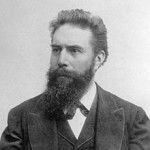 At some point in every life, there comes a need for X-rays. It might be a broken bone, as it was this time for me, when I broke my shoulder three weeks ago, or it might be at the dentist, as he looks for cavities in your teeth, but I think pretty much everyone has an X-ray at some point. This process is so common, that most of us give it little or no thought, but prior to November 8, 1895, X-rays didn’t exist. It was on this day in 1895…120 years ago, that physicist Wilhelm Conrad Röntgen became the first person to observe X-rays. This was a huge scientific advancement that would ultimately benefit a variety of fields, but most of all medicine, by making the hidden things visible. Before the discovery of X-ray, broken bones, tumors, and the location of bullets were all diagnosed by physical examination and a doctor’s best guess. It’s no wonder so many people didn’t survive their injuries or illnesses.
At some point in every life, there comes a need for X-rays. It might be a broken bone, as it was this time for me, when I broke my shoulder three weeks ago, or it might be at the dentist, as he looks for cavities in your teeth, but I think pretty much everyone has an X-ray at some point. This process is so common, that most of us give it little or no thought, but prior to November 8, 1895, X-rays didn’t exist. It was on this day in 1895…120 years ago, that physicist Wilhelm Conrad Röntgen became the first person to observe X-rays. This was a huge scientific advancement that would ultimately benefit a variety of fields, but most of all medicine, by making the hidden things visible. Before the discovery of X-ray, broken bones, tumors, and the location of bullets were all diagnosed by physical examination and a doctor’s best guess. It’s no wonder so many people didn’t survive their injuries or illnesses.
When I broke my shoulder, having the X-rays was something I really gave no thought to, other than sitting there with my shoulder hurting while the technicians did their jobs. Of course, looking at the X-rays of my broken shoulder was interesting. I suppose that comes from my caregiver side. Since taking care of my parents  and in-laws, I can honestly say that I have looked at more X-rays than I can count. Each one held an interest to me. It cleared up the mystery of what was wrong with my loved one, and now myself. I have to think too, that were it not for the ability to do X-rays, my surgery to put a plate and nine screws in my shoulder bone, would not have been possible, or at least not easy to do. I’m sure that my prognosis would have been much different. X-rays have made so many things possible, and they aren’t even limited to the medical field. They have helped in many fields. Other than medicine, the other original use for X rays was in studying the inner structure of materials. By firing a beam of X rays at a crystal, the atoms scatter the beam in a very precise way, casting a kind of shadow of the crystal’s interior pattern from which you can measure the distance between one atom and nearby atoms. X-rays are used in airports to look into carry on items to ensure the safety of the passengers on the flight. The criminal justice system has used dental and other X-rays for some time to identify unknown crime victims. X-rays are being used to identify the elements of paintings done by the masters to find out what kind of pigment was used. They help to determine the age of paintings, whether they are genuine or copies and how the pigments change over time. X-rays have improved the work of so many people, by making the hidden things visible.
and in-laws, I can honestly say that I have looked at more X-rays than I can count. Each one held an interest to me. It cleared up the mystery of what was wrong with my loved one, and now myself. I have to think too, that were it not for the ability to do X-rays, my surgery to put a plate and nine screws in my shoulder bone, would not have been possible, or at least not easy to do. I’m sure that my prognosis would have been much different. X-rays have made so many things possible, and they aren’t even limited to the medical field. They have helped in many fields. Other than medicine, the other original use for X rays was in studying the inner structure of materials. By firing a beam of X rays at a crystal, the atoms scatter the beam in a very precise way, casting a kind of shadow of the crystal’s interior pattern from which you can measure the distance between one atom and nearby atoms. X-rays are used in airports to look into carry on items to ensure the safety of the passengers on the flight. The criminal justice system has used dental and other X-rays for some time to identify unknown crime victims. X-rays are being used to identify the elements of paintings done by the masters to find out what kind of pigment was used. They help to determine the age of paintings, whether they are genuine or copies and how the pigments change over time. X-rays have improved the work of so many people, by making the hidden things visible.
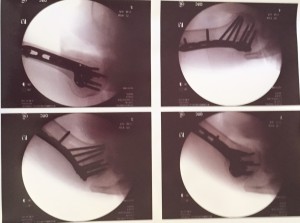
Röntgen’s discovery of the X-ray was really by accident. He was in his lab in Wurzburg, Germany, where he was testing whether cathode rays could pass through glass when he noticed a glow coming from a nearby chemically coated screen. Because he really didn’t know exactly what kind of rays these were, he called them X-rays. I have often wondered just why they were called X-rays. Now I know. It was all because X means unknown. It’s almost funny to call something unknown, when it reveals the hidden things, making them known. No matter what it is called, it is, nevertheless, an amazing find and an amazing advancement in the medical field, and so many others too.
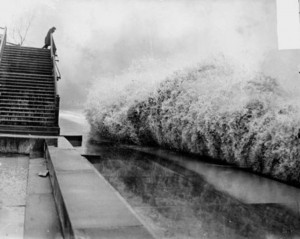 When we think of hurricanes, we think of the ocean, but on November 7, 1913, there was a storm over the Great Lakes that would go down in United States history as the largest inland maritime disaster, in terms of number of ships lost. The storm was nicknamed the White Hurricane. The storm system brought blizzard conditions to areas all around the Great Lakes, with hurricane force winds. The nature of the storm was unique and powerful, and caught even the most seasoned captain by surprise. Two low pressure centers merged and rapidly intensified over the Lake Huron, with periods of storm-force winds occurring over a four day period. Surrounding ports signaled it was a level-four storm, but for some vessels, it was already too late. Major ship wrecks took place on all the Great Lakes except for Lake Ontario. Vessels at that time could withstand 90 mile per hour winds and 35 foot waves, but it was the whiteout conditions and accumulation of ice on the ships that turned an already dangerous situation into a deadly one. Ship captains were unable to maintain navigation, resulting in 12 shipwrecks, 19 ships stranded, and an estimated 250 lives lost. On land, 24 inches of snow shut down traffic and communication, causing millions of dollars in damage.
When we think of hurricanes, we think of the ocean, but on November 7, 1913, there was a storm over the Great Lakes that would go down in United States history as the largest inland maritime disaster, in terms of number of ships lost. The storm was nicknamed the White Hurricane. The storm system brought blizzard conditions to areas all around the Great Lakes, with hurricane force winds. The nature of the storm was unique and powerful, and caught even the most seasoned captain by surprise. Two low pressure centers merged and rapidly intensified over the Lake Huron, with periods of storm-force winds occurring over a four day period. Surrounding ports signaled it was a level-four storm, but for some vessels, it was already too late. Major ship wrecks took place on all the Great Lakes except for Lake Ontario. Vessels at that time could withstand 90 mile per hour winds and 35 foot waves, but it was the whiteout conditions and accumulation of ice on the ships that turned an already dangerous situation into a deadly one. Ship captains were unable to maintain navigation, resulting in 12 shipwrecks, 19 ships stranded, and an estimated 250 lives lost. On land, 24 inches of snow shut down traffic and communication, causing millions of dollars in damage.
The storm took place before the time when weather forecasters had the luxury of computer models, the detailed surface and upper air observations, weather satellites, or radar needed to make the most accurate predictions. Had weather forecasters then been able to access modern forecasting equipment, they may have been able to determine the likely development of this type of storm system in advance, as they did with Superstorm Sandy in 2012. As part of the forecast for Sandy forecasters were able to predict storm force winds over the lower Great Lakes five days in advance. The technology and forecast models available to forecasters today led to a more accurate forecast which saved mariners, recreational boaters, and businesses millions, as they were able to make preparations in advance of Sandy’s storm force winds and near 20 foot waves.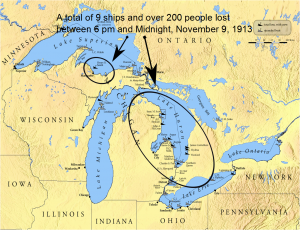
One hundred years later, the National Oceanic and Atmospheric Administration, in the Great Lakes is commemorating the Storm of 1913, not only for the pivotal role it played in the history of the Great Lakes, but also for its enduring influence. Modern systems of shipping communication, weather prediction, and storm preparedness have all been fundamentally shaped by the events of November 1913. It’s strange to think that one storm could make such a lasting impact on so many systems, but then it is the need for something better that spurs great inventive minds to invent a solution to a serious problem.
The National Oceanic and Atmospheric Administration plays a major role in protecting maritime relics of the past. Included are many of the ships lost in 1913. They have remained preserved deep below the surface of the Great Lakes. The National Oceanic and Atmospheric Administration’s Thunder Bay National Marine Sanctuary is a 48-square-mile area of protected territory with one of America’s best preserved and nationally significant collections of shipwrecks. Located in northwestern Lake Huron, Thunder Bay is adjacent to one of the most treacherous stretches of water within the Great Lakes system. Unpredictable weather, murky fog banks, sudden gales, and rocky shoals earned the area the name “Shipwreck Alley.” To date, more than 50 shipwrecks have been discovered within the sanctuary including the Isaac M. Scott, a 504 foot steel freighter lost in the storm of 1913.
This storm holds an interest for me, because at that time in history, my grandparents, Allen and Anna Spencer were living in the Great Lakes area. My grandfather was not part of the crew of any ship, and so any effect to them would have come in the form of very deep snow. My Aunt Laura would have been just 16 months old at 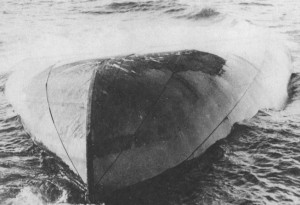 the time. I’m sure that the thought of being stranded in her home, was not a pleasant one for my grandmother, considering Aunt Laura’s very young age, but they survived the White Hurricane, as did most other people, at least those on land anyway. It still seems incredible to me that a storm of that magnitude could have brewed in an inland setting, but then anyone who knows the Great Lakes will tell you that they are so big that they might just as well be considered a sea. The November Gales have long been known as killers, especially over Lake Superior, the largest of the Great Lakes. I’m glad that modern weather forecasting equipment had at least lessened the possibility of ships and lives being lost in the Great Lakes, as well as the oceans.
the time. I’m sure that the thought of being stranded in her home, was not a pleasant one for my grandmother, considering Aunt Laura’s very young age, but they survived the White Hurricane, as did most other people, at least those on land anyway. It still seems incredible to me that a storm of that magnitude could have brewed in an inland setting, but then anyone who knows the Great Lakes will tell you that they are so big that they might just as well be considered a sea. The November Gales have long been known as killers, especially over Lake Superior, the largest of the Great Lakes. I’m glad that modern weather forecasting equipment had at least lessened the possibility of ships and lives being lost in the Great Lakes, as well as the oceans.
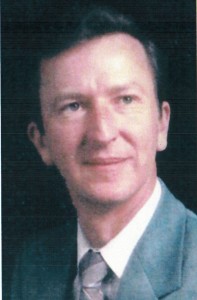 My cousin, Gene Fredrick was a man of many talents. He was the oldest of his parents’ two sons. His parents were Fritz Fredrick and Laura Spencer Fredrick, my aunt. As a boy, Gene was the helpful older brother, helping his mommy with his little brother, Dennis, who was always known to my sisters and me as Denny. Following their parents’ divorce, my Aunt Laura brought her sons to Casper, Wyoming to live near her sister, Ruth Spencer Wolfe, and her husband Jim, who were living there at the time. Casper was also where my parents would settle in 1959, and that meant that my family got to see our cousins, Gene and Denny Fredrick and Shirley, Larry, and Terry Wolfe quite a bit. Those were great times.
My cousin, Gene Fredrick was a man of many talents. He was the oldest of his parents’ two sons. His parents were Fritz Fredrick and Laura Spencer Fredrick, my aunt. As a boy, Gene was the helpful older brother, helping his mommy with his little brother, Dennis, who was always known to my sisters and me as Denny. Following their parents’ divorce, my Aunt Laura brought her sons to Casper, Wyoming to live near her sister, Ruth Spencer Wolfe, and her husband Jim, who were living there at the time. Casper was also where my parents would settle in 1959, and that meant that my family got to see our cousins, Gene and Denny Fredrick and Shirley, Larry, and Terry Wolfe quite a bit. Those were great times.
Of course, Gene and Denny were the oldest cousins, and so they married and while they both still lived in Casper, we got to see their children too. Gene and his wife Paula had two sons, Tim and Shawn, and Denny and his wife, Sandy had a son named David. Later they both moved away, so we didn’t get to see them very much. I’ve always felt sad that we lost touch, and I am grateful that we have Facebook now, and that has given us a way to reconnect.
Gene was always a soft spoken man, who shared so much of himself with his sons. He loved to make furniture, and was very talented at it. He also 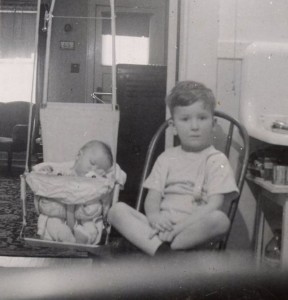 connected with our Uncle Bill, who has always loved the family history, but didn’t have the equipment or know how to scan pictures, or a computer to research people or organize the information. Gene became Uncle Bill’s right hand man, helping to get the family history in the organized condition I found it when my cousin Bill sent it to me to allow me to scan it. I can honestly say that we all owe Gene a debt of gratitude for all the help he gave Uncle Bill.
connected with our Uncle Bill, who has always loved the family history, but didn’t have the equipment or know how to scan pictures, or a computer to research people or organize the information. Gene became Uncle Bill’s right hand man, helping to get the family history in the organized condition I found it when my cousin Bill sent it to me to allow me to scan it. I can honestly say that we all owe Gene a debt of gratitude for all the help he gave Uncle Bill.
Gene taught his sons anything they were interested in. Tim tells about the years when he started becoming interested in photography. They set up a dark room, and Tim learned photography. I don’t know if Gene already knew how to develop pictures before, but they worked it together. Tim tells of making new prints from the old damaged ones. I think that Gene was an amazing man. Today would have been 76 years old today. Happy birthday in Heaven, Gene. We are all in your debt. We love and miss you.
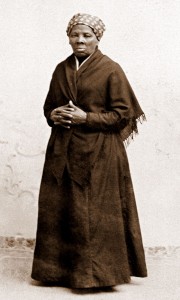 The years in American history during which people held slaves, were in my opinion, sad, dark years. I don’t like the idea of anyone being a slave to another person. Nevertheless, it is a part of our history, that ended when Abraham Lincoln freed the slaves effective January 1, 1863, which also brought about his own death be assassination.
The years in American history during which people held slaves, were in my opinion, sad, dark years. I don’t like the idea of anyone being a slave to another person. Nevertheless, it is a part of our history, that ended when Abraham Lincoln freed the slaves effective January 1, 1863, which also brought about his own death be assassination.
As a girl in junior high school, I read a book about Harriet Tubman and The Underground Railroad. The book so impressed me, that I have never forgotten it. Harriet was a conductor, as they were known, on the Underground Railroad. The conductors lead slaves who had escaped, along designated trails, in extreme secrecy, mostly at night, from the south to the north, and often into Canada. Harriet’s code 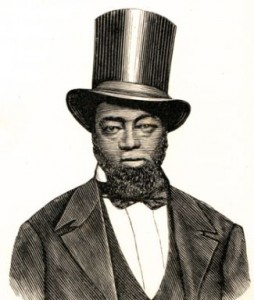 name was “Moses” and she was one of the most famous conductors in history, although there are several others too.
name was “Moses” and she was one of the most famous conductors in history, although there are several others too.
One of the other conductors was Samuel Burris. Burris was a free African-American, who was caught helping a slave try to escape from Delaware in 1847. Burris was caught, tried, and found guilty of “enticing slaves” to escape. As part of his sentence, he was sold into slavery for seven years. Instead, a Pennsylvania anti-slavery society raised the money to purchase him and set him free. Burris went right back to helping slaves escape.
From what I read, and from what history has told us, these conductors were very committed to this, and that makes sense when you think about the fact that they held the very lives of their cargo or passengers, which is what they called the escaped slave, and their own life in their hands. Harriet Tubman made 13 trips on the Underground Railroad bringing seventy people to freedom. She was able to say that she had “never lost a passenger” in all that time. I don’t know how many Samuel Burris helped to escape, but I’m sure it was quite a number too.
Samuel Burris family has been working for years to 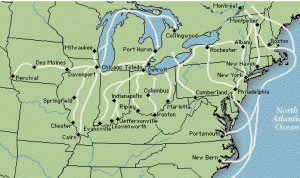 have him pardoned for the crimes he was convicted of, and finally, today, November 2, 2015, Samuel Burris was pardoned. His grand niece, Ocea Thomas of Atlanta was interviewed for television Tuesday, and she said that she received a phone call last weekend letting her know Delaware Governor, Jack Markell has decided to posthumously pardon Burris for his conviction that was 150 years ago. I think that is awesome, and I think all the conductors who were convicted of crimes concerning the freedom of slaves should also be pardoned. After all, the crimes they were convicted of aren’t even crimes anymore.
have him pardoned for the crimes he was convicted of, and finally, today, November 2, 2015, Samuel Burris was pardoned. His grand niece, Ocea Thomas of Atlanta was interviewed for television Tuesday, and she said that she received a phone call last weekend letting her know Delaware Governor, Jack Markell has decided to posthumously pardon Burris for his conviction that was 150 years ago. I think that is awesome, and I think all the conductors who were convicted of crimes concerning the freedom of slaves should also be pardoned. After all, the crimes they were convicted of aren’t even crimes anymore.
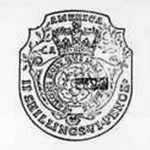 During the years that the colonies were still a part of Great Britain, it was necessary to have troops from Great Britain come and help to defend us during the French and Indian War which took place between 1754 to 1763, and Pontiac’s Rebellion from 1763 to 1764. These were quite costly wars, and to help with recuperate the losses, Great Britain enacted the Sugar Act, which while irritating to the people of the colonies, but it was hidden in the cost of import duties, and so the people accepted it. The enactment of The Stamp Act was a different story, however. The Stamp Act was a tax that Great Britain levied on just the colonies and was strongly disputed. So strongly in fact, that it led to the Revolutionary War.
During the years that the colonies were still a part of Great Britain, it was necessary to have troops from Great Britain come and help to defend us during the French and Indian War which took place between 1754 to 1763, and Pontiac’s Rebellion from 1763 to 1764. These were quite costly wars, and to help with recuperate the losses, Great Britain enacted the Sugar Act, which while irritating to the people of the colonies, but it was hidden in the cost of import duties, and so the people accepted it. The enactment of The Stamp Act was a different story, however. The Stamp Act was a tax that Great Britain levied on just the colonies and was strongly disputed. So strongly in fact, that it led to the Revolutionary War.
The Stamp Act was not what people might think it was. It was not when the use of postage stamps were first introduced. The Stamp Act went so much further than that. The Stamp Act was designed to force colonists to use special stamped paper in the printing of newspapers, pamphlets, almanacs, and playing cards, and to have a stamp embossed on all commercial and legal papers. The stamp itself displayed an image of a Tudor rose framed by the word “America” and the French phrase Honi soit qui mal y pense, meaning ”Shame to him who thinks evil of it.” Of course, the cost of said paper was high, and the colonists ere outraged. This was taxation, without representation, and it was not going to be tolerated.
Massachusetts politician Samuel Adams organized the secret Sons of Liberty organization. They planned protests against the measure, and the Virginia legislature and other colonial assemblies passed resolutions opposing the act. In October, nine colonies sent representatives to New York to attend a Stamp Act Congress, where resolutions of “rights and grievances” were framed and sent to Parliament and King George III. Their voices landed on deaf ears, and The Stamp Act was enacted on this day, November 1, 1765.
The colonists acted quickly. The arrival of the stamps to stamp the paper brought violence and economic retaliation. The colonists began a general boycott of British goods. The Sons of Liberty staged attacks on the customhouses and homes of tax collectors in Boston. The protests and economic turmoil went on for months. Finally, Benjamin Franklin appealed to the British House of Commons. Parliament took a vote, and they repealed The Stamp Act in March 1766. The same day, they made the mistake of passing Declaratory Acts, stating that the British government had free and total legislative power over the colonies.
This would prove to be their downfall. Parliament attempted to force unpopular taxation measures on the American colonies in the late 1760s. This action lead to a steady, and eventually complete, deterioration in British-American relations that brought about the outbreak of the American Revolution in 1775, and the eventual Declaration of Independence of America from Great Britain. It was a hard lesson for Great Britain to 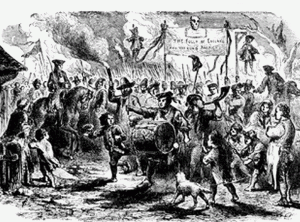 learn, and on that some political parties, namely the Democrats have not learned yet. When you tax the people too heavily, they will rebel, and the outcome will not be in the favor of that abusive government. If taxes are lower, the country will grow. Entrepreneurs will begin new ventures, and the country will prosper, and with prosperity, comes the natural process of more money to run the government. Ours is a nation of independent thinkers, and people of action. Taxes that are too high and unfair, stifle that independent thinking and slow down that action. It is just the opposite of what the proponents of a grossly obese government would expect, but it is nevertheless, the way it works. Our government would do well to realize that, and make a change.
learn, and on that some political parties, namely the Democrats have not learned yet. When you tax the people too heavily, they will rebel, and the outcome will not be in the favor of that abusive government. If taxes are lower, the country will grow. Entrepreneurs will begin new ventures, and the country will prosper, and with prosperity, comes the natural process of more money to run the government. Ours is a nation of independent thinkers, and people of action. Taxes that are too high and unfair, stifle that independent thinking and slow down that action. It is just the opposite of what the proponents of a grossly obese government would expect, but it is nevertheless, the way it works. Our government would do well to realize that, and make a change.
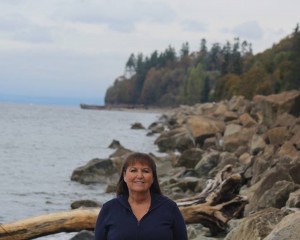 When my daughter, Amy Royce and her family first moved to the Seattle, Washington area, I started looking around online to see what sights there might be for them to go visit. The first thing I came across was the Pacific Queen shipwreck. I was excited to tell them about a shipwreck in their area. I thought it might be a cool thing to go see. Amy researched it too, and found that it was on a private beach. We were disappointed, but I couldn’t get it off my mind.
When my daughter, Amy Royce and her family first moved to the Seattle, Washington area, I started looking around online to see what sights there might be for them to go visit. The first thing I came across was the Pacific Queen shipwreck. I was excited to tell them about a shipwreck in their area. I thought it might be a cool thing to go see. Amy researched it too, and found that it was on a private beach. We were disappointed, but I couldn’t get it off my mind.
Bob and I had a little time on Saturday, so we decided to head back out to Puget Sound. I got an idea to see if there was a place where we could actually see the ship, and found that we could see it from Picnic Point Park. While we could not get close to the private beach where the Pacific Queen rests, we were treated to some really good views of the ship, 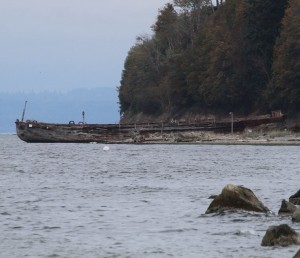 and I was so excited. This was something I really wanted to see.
and I was so excited. This was something I really wanted to see.
I started researching the origins of the Pacific Queen online, I found that she was a old minesweeper. The ship was not wrecked, but rather brought to the site by a man who planned to salvage the metal on her. So the only wreck she had was when she was run aground to her final resting place. The Pacific Queen is one of 27 boats that were brought to the sight over the years, but she is the only one that really still resembles a ship. Several of the boats are underwater except during low tide, and those still look somewhat like ships too.
I admit that I was a little disappointed that it wasn’t an actual shipwreck, but then again, the ship was built in the 1800s. It was actually brought to its current location in 1929, and really has been an area attraction since that time. The best way to get up close is by kayak, but the beach is off limits. Apparently you can walk the distance from Picnic Point Park to the Pacific Queen during the low tide, but it is not recommended that you go onto the actual beach. Nevertheless, a few people have ventured close, and if the owner was in a good mood, they might have been treated to a few of the stories surrounding the boats and their arrival at the current sight.
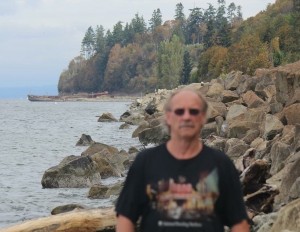 In the end, with the boat viewing and my research, I felt very pleased with this adventure. Whether she had wrecked or not, the Pacific Queen was a very cool boat. It was amazing to sit and wonder where she had been and what she and her crews had seen. A minesweeper must have been an important boat, and I would think that would be a dangerous job. If you didn’t see a mine and you bumped into it…well, it was all over for you. Nevertheless, the crews of the Pacific Queen must have been good at their jobs, because she survived the war and ended up on her current resting place, a ship of beauty and intrigue, sought out by many and having her picture on the Internet for all to see. I know that for me, it was a view I will never forget.
In the end, with the boat viewing and my research, I felt very pleased with this adventure. Whether she had wrecked or not, the Pacific Queen was a very cool boat. It was amazing to sit and wonder where she had been and what she and her crews had seen. A minesweeper must have been an important boat, and I would think that would be a dangerous job. If you didn’t see a mine and you bumped into it…well, it was all over for you. Nevertheless, the crews of the Pacific Queen must have been good at their jobs, because she survived the war and ended up on her current resting place, a ship of beauty and intrigue, sought out by many and having her picture on the Internet for all to see. I know that for me, it was a view I will never forget.
 In a time when our police officers are being randomly attacked, I think it is important to remember just who it is that comes running in to protect those in need of assistance. Police officers have such a complicated job. Part of the people they come in contact with are in need of their assistance, and when they are, they are grateful for the help. The other part of the people are the criminal side, and they are the ones, of course, who hate the cops. And unfortunately, sometimes the lines get very blurred. There are people in need of help, but they don’t want that help, and those who the cops are arresting or giving a ticket to, who then steps in the assist the very police officer who was arresting them. Those situations are really quite surprising…amazingly so.
In a time when our police officers are being randomly attacked, I think it is important to remember just who it is that comes running in to protect those in need of assistance. Police officers have such a complicated job. Part of the people they come in contact with are in need of their assistance, and when they are, they are grateful for the help. The other part of the people are the criminal side, and they are the ones, of course, who hate the cops. And unfortunately, sometimes the lines get very blurred. There are people in need of help, but they don’t want that help, and those who the cops are arresting or giving a ticket to, who then steps in the assist the very police officer who was arresting them. Those situations are really quite surprising…amazingly so.
Nevertheless, I can see how being a police officer would be a difficult occupation. When the good guys can turn into the bad guys, and the bad guys can turn into the good guys, it creates a situation whereby an officer just doesn’t know what to expect going into any situation. Still, they go into those situations, knowing the possible perils, but knowing too that the work they do is important.
Many people don’t really give much thought to the life of a police officer, but when you have two of them in your very close family, you just naturally feel differently about them. You know their hearts and you know their level of integrity. They aren’t just a random police officer, but rather, they are family, and you love them. That is the situation in my family. We have two police officers in our midst. Leutenant Chris Hadlock, of the Casper Police Department, and State Trooper Jason Sawdon of the Wyoming Highway  Patrol, are both exceptional officers. I’m sure that is why my family and I take personal offense when someone decides that police officers are not important. There are many times when any of us could be in a really bad place, were it not for a police officer. So the next time you are stopped for speeding, and you are tempted to be angry about it, remember…you were speeding, and they officer is just doing his or her job. Any time we break the law, we are a risk for others…people, just like us, who that officer has sworn an oath to protect. Swallow that anger, and take your medicine. You deserve it. Today is a day to honor our police officers. Thank you Chris and Jason, and the officers in the Casper area and the nation. We appreciate your service. Police lives matter. Thank a police officer today.
Patrol, are both exceptional officers. I’m sure that is why my family and I take personal offense when someone decides that police officers are not important. There are many times when any of us could be in a really bad place, were it not for a police officer. So the next time you are stopped for speeding, and you are tempted to be angry about it, remember…you were speeding, and they officer is just doing his or her job. Any time we break the law, we are a risk for others…people, just like us, who that officer has sworn an oath to protect. Swallow that anger, and take your medicine. You deserve it. Today is a day to honor our police officers. Thank you Chris and Jason, and the officers in the Casper area and the nation. We appreciate your service. Police lives matter. Thank a police officer today.
 The Constitution has been in the news a lot these days, or shall I say, the violation of the Constitution. Sometimes I wonder if the signers of the Constitution would even be able to recognize the nation that they had envisioned when they wrote the Constitution. I happen to think they would not, but then even at the signing of the Constitution there was controversy. In that way, I suppose there would always be those who would do everything in their power to change or even do away with the Constitution. At the time of the Constitutional Convention in Philadelphia, only 38 of the 41 delegates present at its conclusion, agreed to sign the document. There were those, even then, who disagreed with what was laid out there. I suppose that is common in anything in life. Needless to say, it was a hard-won battle to win the ratification by the necessary nine out of thirteen US states in existence at the time.
The Constitution has been in the news a lot these days, or shall I say, the violation of the Constitution. Sometimes I wonder if the signers of the Constitution would even be able to recognize the nation that they had envisioned when they wrote the Constitution. I happen to think they would not, but then even at the signing of the Constitution there was controversy. In that way, I suppose there would always be those who would do everything in their power to change or even do away with the Constitution. At the time of the Constitutional Convention in Philadelphia, only 38 of the 41 delegates present at its conclusion, agreed to sign the document. There were those, even then, who disagreed with what was laid out there. I suppose that is common in anything in life. Needless to say, it was a hard-won battle to win the ratification by the necessary nine out of thirteen US states in existence at the time.
Before the Constitution, the United States was operating under the Articles of Confederation, which was ratified several months before the British surrender at Yorktown in 1781. The Articles of Confederation and Perpetual Union were an agreement among all thirteen original states in the United States of America. Basically it was the first constitution. Even when not yet ratified, the Articles provided a system for the Continental Congress to direct the American Revolutionary War, conduct diplomacy with Europe, and deal with territorial issues and Native American relations, but it was weak in that it didn’t allow for our president, a court system, or taxation, thereby leaving us with a weaker government. Congress was also given no authority to enforce its requests to the states for troops, giving us a weaker military force. Yet, even with the proposed changes, there were those who would disagreed with the proposed new Constitution.
When the Constitutional Convention was convened on May 25, 1787, the plan had been to amend the Articles 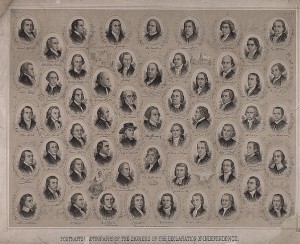 of Confederation, but that plan was quickly set aside in favor of writing a completely new Constitution. The meeting was held in Philadelphia’s Pennsylvania State House. It is now known as Independence Hall. Revolutionary War hero George Washington, a delegate from Virginia was elected as convention president. The debate was heated, but in the end, the delegates came up with a brilliant federal organization that boasted an intricate system of checks and balances. One of the main divisions in the discussions was that the more populated states wanted a state representation in Congress, and the smaller states wanted equal representation. That problem was solved by the Connecticut Compromise, which proposed a two chamber legislature with proportional representation in the lower house known as the House of Representatives and equal representation of the states in the upper house known as the Senate. It seemed a fair way to do it, but there are still those who disagree to this day.
of Confederation, but that plan was quickly set aside in favor of writing a completely new Constitution. The meeting was held in Philadelphia’s Pennsylvania State House. It is now known as Independence Hall. Revolutionary War hero George Washington, a delegate from Virginia was elected as convention president. The debate was heated, but in the end, the delegates came up with a brilliant federal organization that boasted an intricate system of checks and balances. One of the main divisions in the discussions was that the more populated states wanted a state representation in Congress, and the smaller states wanted equal representation. That problem was solved by the Connecticut Compromise, which proposed a two chamber legislature with proportional representation in the lower house known as the House of Representatives and equal representation of the states in the upper house known as the Senate. It seemed a fair way to do it, but there are still those who disagree to this day.
It would seem like they had an instant solution, but that wasn’t so. As dictated by Article VII, the document would not become binding until it was ratified by nine of the 13 states. On December 7, Delaware, Pennsylvania, New Jersey, Georgia, and Connecticut ratified the Constitution in quick succession. Other states, especially Massachusetts, opposed the Constitution, because it failed to reserve undelegated powers to the states and lacked constitutional protection of basic political rights, such as freedom of speech, religion, and the press, which I personally agree with. By February 1788, they had reached a compromise under which Massachusetts and other states would agree to ratify the document and that amendments would immediately be added to provide the protections they proposed. The Constitution was then narrowly ratified in Massachusetts. Maryland and South Carolina quickly followed. On June 21, 1788, New Hampshire became the ninth state to ratify the document, and it was agreed that government under the US Constitution would begin on March 4, 1789. In June, Virginia ratified the Constitution, followed by New York in July. The Constitution was signed on this day, September 17, 1787.
As promised, on September 25, 1789, the first Congress of the United States adopted 12 amendments to the 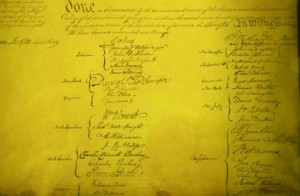 US Constitution, called the Bill of Rights. The Bill of Rights was then sent to the states for ratification. Ten of these amendments were ratified in 1791. In November 1789, North Carolina became the 12th state to ratify the US Constitution. Rhode Island, which opposed federal control of currency and was critical of compromise on the issue of slavery, resisted ratifying the Constitution until the US government threatened to sever commercial relations with the state. On May 29, 1790, Rhode Island voted by two votes to ratify the document, and the last of the original 13 colonies joined the United States. Today, the US Constitution is the oldest written constitution in operation in the world. That should say something, and it should be reason to protect it.
US Constitution, called the Bill of Rights. The Bill of Rights was then sent to the states for ratification. Ten of these amendments were ratified in 1791. In November 1789, North Carolina became the 12th state to ratify the US Constitution. Rhode Island, which opposed federal control of currency and was critical of compromise on the issue of slavery, resisted ratifying the Constitution until the US government threatened to sever commercial relations with the state. On May 29, 1790, Rhode Island voted by two votes to ratify the document, and the last of the original 13 colonies joined the United States. Today, the US Constitution is the oldest written constitution in operation in the world. That should say something, and it should be reason to protect it.
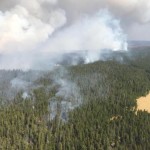
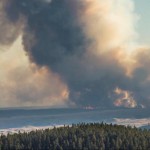 There is a fire burning in Yellowstone National Park. There are fires burning all over the western United States, as a matter of fact, but this particular fire bring back memories of the last big fire in Yellowstone National Park, and just how upset everyone was over the Let It Burn policy. Now, here we are again with a lightning caused fire burning in Yellowstone National Park, and no effort being made to fight it…unless structures end up being in danger of destruction.
There is a fire burning in Yellowstone National Park. There are fires burning all over the western United States, as a matter of fact, but this particular fire bring back memories of the last big fire in Yellowstone National Park, and just how upset everyone was over the Let It Burn policy. Now, here we are again with a lightning caused fire burning in Yellowstone National Park, and no effort being made to fight it…unless structures end up being in danger of destruction.
As with the 1988 fire, they tell us that the Natural Burn policy, another name for the Let It Burn policy, is in effect for this fire. The biggest problem with that policy is, of course, is that a fire burning unchecked can get so far out of control that it burns beyond human ability to put it out. It becomes an impossible task. That is what happened in 1988, and the whole nation was angry about it. In the end, that fire burned 1.2 million acres. Many people had the impression that the Park Service had failed badly. Nearly a third of Yellowstone National Park was badly burned. The Park Service said that the situation was inevitable because of the drought. Still, most people, me included, felt that if they had tried to fight it sooner, they could have saved a lot of the park from the hideous scarring damage it ended up with.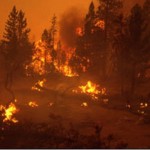

I understand that Yellowstone National Park has several fires each year, and that they usually burn themselves out in a short period of time, but in drought years, the Park Service simply can’t allow the fires to go. My concern with the current fire is that we are already at 2594 plus acres burned. How quickly is this fire going to get out of hand and how long before they will decide to do something about it?
The Yellowstone National Park fire of 1988 started in June and burned into November. It is a summer I will never forget. Our skies were constantly filled with smoke. The air stunk from the acrid smoke. It was hard for people to breathe. You couldn’t get away from it. I know this is how every person who lives in a fire area feels. I know I don’t have to explain this to anyone who has been around fires much. They already know more about wildfires than they ever wanted to.
The important thing for the government and the park service to remember is that the people of this nation love 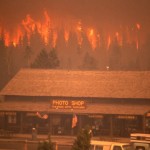
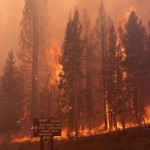 Yellowstone National Park, our oldest national park. It existed before the states where it is located were even states. I truly understand that fires are a natural part of the forest ecosystem, and that they get rid of dry brush that could bring about a worse fire, but I can’t see that it serves any good purpose to let 1.2 million acres of beautiful forest land burn and not even try to stop it. It destroys the homes of wildlife. It hurts the economy of the area it is in. All I ask is that the Park Service and the government remember just how important Yellowstone National Park is to the people of this nation.
Yellowstone National Park, our oldest national park. It existed before the states where it is located were even states. I truly understand that fires are a natural part of the forest ecosystem, and that they get rid of dry brush that could bring about a worse fire, but I can’t see that it serves any good purpose to let 1.2 million acres of beautiful forest land burn and not even try to stop it. It destroys the homes of wildlife. It hurts the economy of the area it is in. All I ask is that the Park Service and the government remember just how important Yellowstone National Park is to the people of this nation.
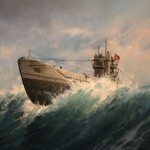 Submarines have been around a long time, but during the world wars, Germany built a submarine that was superior to any other submarine of the time. Called the U-Boat, the name was short for Unterseeboot, or under sea boat. Winston Churchill said, “the only thing that ever really frightened me during the war was the U-boat peril.” Churchill identified the threat that the U-Boats posed. The Atlantic Lifeline was vital to Britain’s survival. If Germany had been able to prevent merchant ships from carrying food, raw materials, troops and their equipment from North America to Britain, the outcome of World War II could have been very different. Britain might have been starved into submission, and her armies would not have been equipped with American built tanks and vehicles. The U-Boats were a serious threat. The Battle of the Atlantic was a must win situation. If Germany won that battle, Britain would likely have lost the war.
Submarines have been around a long time, but during the world wars, Germany built a submarine that was superior to any other submarine of the time. Called the U-Boat, the name was short for Unterseeboot, or under sea boat. Winston Churchill said, “the only thing that ever really frightened me during the war was the U-boat peril.” Churchill identified the threat that the U-Boats posed. The Atlantic Lifeline was vital to Britain’s survival. If Germany had been able to prevent merchant ships from carrying food, raw materials, troops and their equipment from North America to Britain, the outcome of World War II could have been very different. Britain might have been starved into submission, and her armies would not have been equipped with American built tanks and vehicles. The U-Boats were a serious threat. The Battle of the Atlantic was a must win situation. If Germany won that battle, Britain would likely have lost the war.
From 1918 on, Germany was not supposed to have submarines or submarine crews. However, no checks were in place to stop any research into submarines in Germany and it became clear that during the 1930’s, Germany had been investing time and men into submarine research. Their research and subsequent development of the U-Boat made it a submarine that was very difficult to locate and that made it extremely dangerous. They developed the Enigma machine, which was a series of electro-mechanical rotor cipher machines developed and 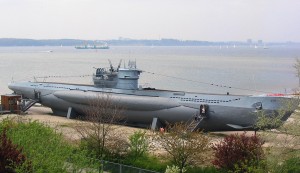 used in the early to early-mid twentieth century for commercial and military usage. Enigma was invented by the German engineer Arthur Scherbius at the end of World War I. The codes it could provide were difficult to decipher. German military messages enciphered on the Enigma machine were first broken by the Polish Cipher Bureau, in December 1932. This success was a result of efforts by three Polish cryptologists, Marian Rejewski, Jerzy Rózycki and Henryk Zygalski, working for Polish military intelligence. Rejewski reverse-engineered the device, using theoretical mathematics and material supplied by French military intelligence. Then, the three mathematicians designed mechanical devices for breaking Enigma ciphers, including the cryptologic bomb. In 1938, the Germans made the machine more complex, and increased complexity was repeatedly added to the Enigma machines, making decryption more difficult and requiring further equipment and personnel. It was more than the Poles could readily produce.
used in the early to early-mid twentieth century for commercial and military usage. Enigma was invented by the German engineer Arthur Scherbius at the end of World War I. The codes it could provide were difficult to decipher. German military messages enciphered on the Enigma machine were first broken by the Polish Cipher Bureau, in December 1932. This success was a result of efforts by three Polish cryptologists, Marian Rejewski, Jerzy Rózycki and Henryk Zygalski, working for Polish military intelligence. Rejewski reverse-engineered the device, using theoretical mathematics and material supplied by French military intelligence. Then, the three mathematicians designed mechanical devices for breaking Enigma ciphers, including the cryptologic bomb. In 1938, the Germans made the machine more complex, and increased complexity was repeatedly added to the Enigma machines, making decryption more difficult and requiring further equipment and personnel. It was more than the Poles could readily produce.
Finally there was a breakthrough. The astonishing achievements of the codebreakers of Bletchley Park saved countless lives. At their peak, there were 12,000 codebreakers at Bletchley Park, 8,000 of them women. The codebreakers helped bring victory in North Africa by giving British commander General Montgomery details of 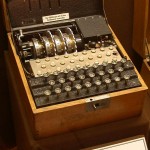 Erwin Rommel’s battle plans and providing the routes of the Nazi supply convoys. This allowed the Royal Navy the opportunity to sink them. Prior to the codebreakers, the U-Boats were only sunk after damage or near damage was done to other ships. Such was the case with the first sinking of a U-Boat. German submarine U-39 was a Type IXA U-boat of the Kriegsmarine that operated from 1938 to the first few days of World War II. On 14 September 1939, just 27 days after she began her first patrol, U-39 attempted to sink the British aircraft carrier HMS Ark Royal by firing two torpedoes at her. The torpedoes malfunctioned and exploded just short of the carrier. In retaliation, U-39 was immediately hunted down by three British destroyers. She was disabled with depth charges, and subsequently sunk. All crew members survived and were captured.
Erwin Rommel’s battle plans and providing the routes of the Nazi supply convoys. This allowed the Royal Navy the opportunity to sink them. Prior to the codebreakers, the U-Boats were only sunk after damage or near damage was done to other ships. Such was the case with the first sinking of a U-Boat. German submarine U-39 was a Type IXA U-boat of the Kriegsmarine that operated from 1938 to the first few days of World War II. On 14 September 1939, just 27 days after she began her first patrol, U-39 attempted to sink the British aircraft carrier HMS Ark Royal by firing two torpedoes at her. The torpedoes malfunctioned and exploded just short of the carrier. In retaliation, U-39 was immediately hunted down by three British destroyers. She was disabled with depth charges, and subsequently sunk. All crew members survived and were captured.

